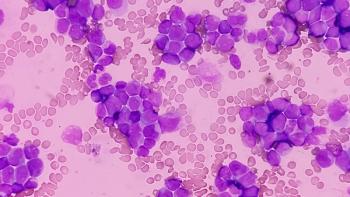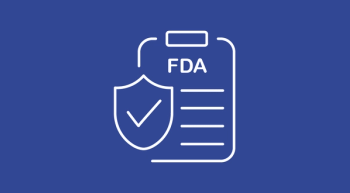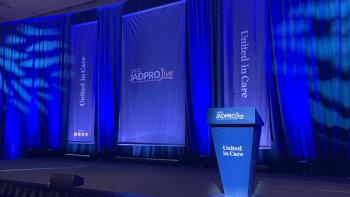
The primary end point of EFS was met in patients given conditioning without TBI, along with allogeneic HCT in a subset of patients with B-ALL.

The primary end point of EFS was met in patients given conditioning without TBI, along with allogeneic HCT in a subset of patients with B-ALL.

Fixed-duration venetoclax combined with obinutuzumab or ibrutinib produced noninferior PFS compared with continuous ibrutinib monotherapy.

Race was identified as an independent prognostic factor in patients with AML receiving intensive chemotherapy.

Danielle Blair, RN, BSN, OCN, CCRP, explains what her role as an adolescent and young adult nurse navigator in oncology entails.

The FDA has approved the use of lisocabtagene maraleucel in patients with relapsed/refractory marginal zone lymphoma.

Nurses play a key role in helping patients with cervical cancer weigh the risks and benefits of radiation and concurrent chemotherapy.

The FDA has approved pirtobrutinib treatment for adults with relapsed/refractory CLL/SLL who have received prior treatment with a covalent BTK inhibitor.

What should nurses know about treating patients with KRAS G12C-mutated metastatic colorectal cancer using adagrasib and cetuximab?

A patient acuity model drove efficient and safe staffing through data from a natural language processing model informed by oncology nurse insights.

Catch up on recent regulatory decisions by the FDA in oncology, including actions in lung, hematologic, genitourinary, and gastrointestinal cancers.

With evolving standards for handling hazardous drugs, nurses must comply with safety and handling guidelines.

Emily Coiro, MSN, AGACNP-BC, BMTCN; and Julie Zgola, BSN, RN, who work in stem cell transplantation, were matched with patients in need of a transplant.

Through the highs and lows of working in oncology nursing, being present with colleagues and patients alike is a gift.

Kristin Daly, MSN, ANP-BC, AOCNP, shares advice for preparing patients for possible adverse effects outside of clinic hours.

The FDA has approved durvalumab plus FLOT for the treatment of patients with resectable gastric or gastroesophageal junction adenocarcinoma.

Emily Shelby, MSN, FNP-C, emphasized that referrals to other specialties is key to managing heavily pretreated patients with metastatic colorectal cancer.


Pembrolizumab plus paclitaxel with or without bevacizumab boosted survival in patients with platinum-resistant, recurrent ovarian cancer.

Kennon McCollum, DNP, explains how multiday ES-SCLC chemotherapy regimens heighten myelosuppression risk and drive dose delays.

The FDA has approved intravenous or subcutaneous pembrolizumab combined with enfortumab vedotin-ejfv in the neoadjuvant and adjuvant MIBC settings.

Elizabeth Hubert, APRN, explains how to treat patients receiving luspatercept for low-risk myelodysplastic syndromes.

The addition of atezolizumab to BCG did not yield improved EFS compared with BCG alone in patients with high-risk non–muscle-invasive bladder cancer.

The FDA has converted its accelerated approval to a standard one for tarlatamab in extensive-stage small cell lung cancer.

The FDA has approved sevabertinib for the treatment of patients with HER2-positive nonsquamous non-small cell lung cancer.

Germline and somatic testing can inform treatment and family risk up front, but NGS is often held for recurrence, explained Courtney R. Arn, APRN-CNP.

The FDA granted standard approval to epcoritamab monotherapy and epcoritamab plus lenalidomide and rituximab for relapsed/refractory follicular lymphoma.

Nivolumab displayed significant RFS benefit compared with ipilimumab in patients with resected stage IIIB to IIIC or IV melanoma.

Gabriel Schwartz, MSN, NP, explains how mechanisms of action determine the safety of systemic treatments in metastatic colorectal cancer post chemotherapy.

Integrating PRO tools in survivorship care may help oncology nurses address ongoing emotional and physical needs of ovarian cancer survivors.

Here are 5 presentations that oncology APPs should know about, from patient management to practice management.